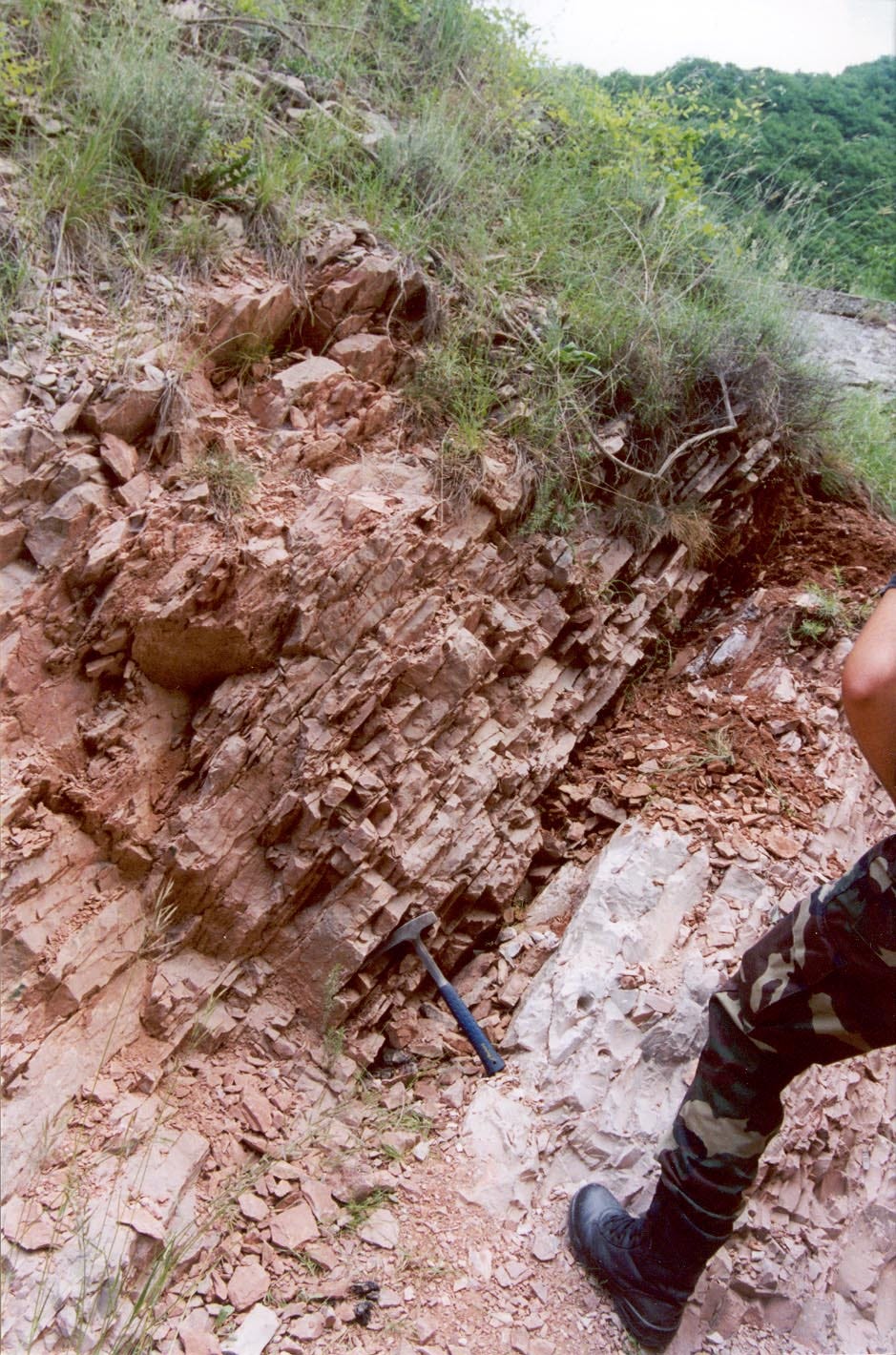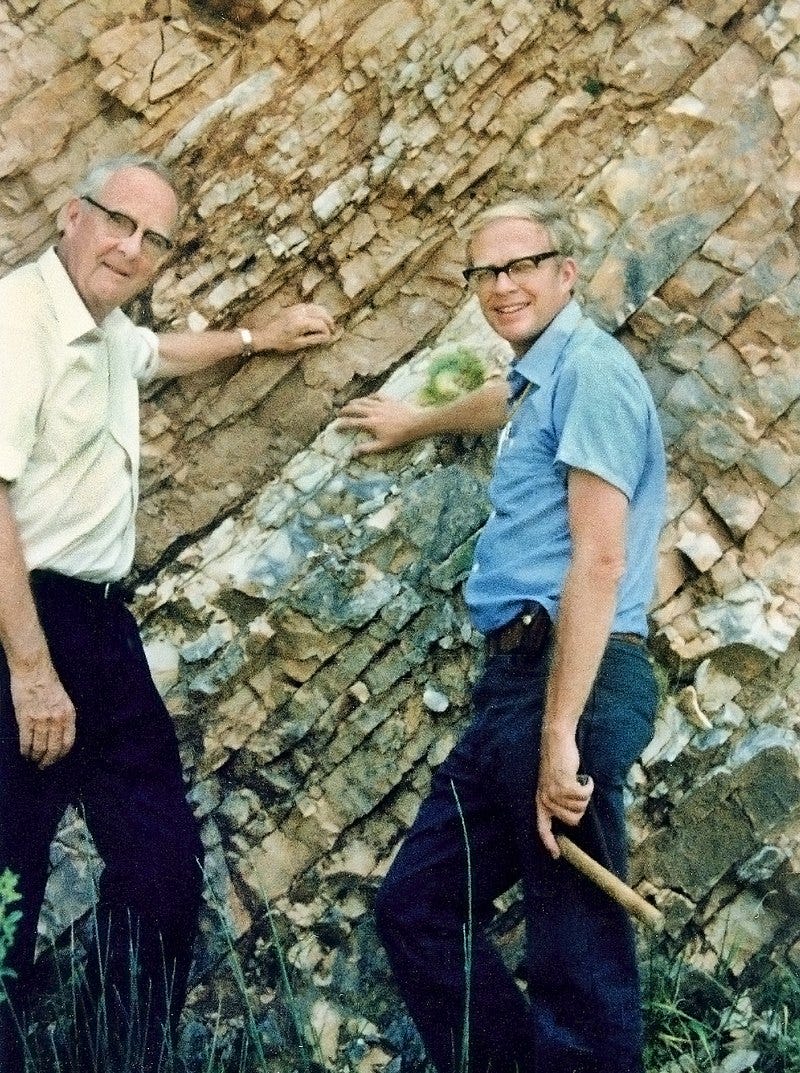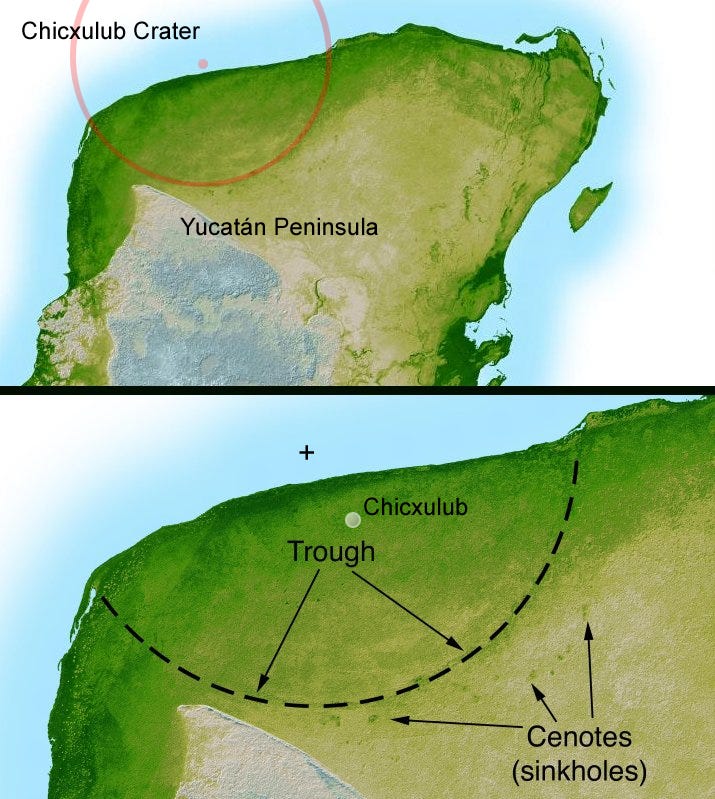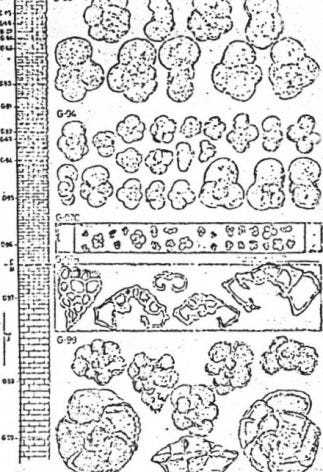Many are aware that dinosaurs disappeared nearly 66 million years ago, after a major climate change that made their environments inhospitable. Most people know about the dinosaurs disappearance, but few know that what happened at the end of the Mesozoic era was actually a mass extinction. Well, maybe even fewer people know that some clues of what happened in that period have been first found in central Italy, close to Saint Francis' hometown, near a small city in the Apennines called Gubbio. The story is about father and son, Louis Alvarez, a Nobel prize physicist, and Walter Alvarez, a renown American geologist at Berkeley with a love for Italy.

In the 60s Walter Alvarez was working for an oil company in Sicily when he grew interested in the geology and archeology of Rome and the nearby Apennines. While studying the Central Apennines' marine sequences in an Italian region called Umbria, he and his father discovered something unusual.
The layers, or beds, of a geological formation called Scaglia Rossa (it sounds like "red shale"), well known to geologists who study the Apennines, contain a major geological time boundary. The beds are made of fine limestone and clay with some chert deposited in a sea that surrounded ancient coral reefs. They appear dark brown-red in color but one bed looks a bit whitish. At the top of that bed lies the major geological time boundary we are talking about: the end of the Mesozoic. This is the bed that marks the time of a mass extinction, the same that wiped out the dinosaurs. It is the "death bed" of the dinosaurs and of many other species - up to 75% of the existing species of the time. Walter Alvarez and his father Louis (in the picture below in front of the famous outcrop) thought that it would be interesting to analyze not only the fossil content but also the chemical content of that bed, which they sampled near a small town called Gubbio, a mere 50 km north of Assisi, hometown of Saint Francis, in Perugia's province. They found a non common high concentration of iridium, an element that is rather rare on Earth. But high concentrations of iridium can be found in meteorites. Therefore, father and son speculated that a meteorite impact, occurred at the geological time corresponding to the time of deposition of the "death bed" in the Italian countryside near Gubbio, may have dispersed iridium all over the Earth. High concentrations of iridium where also found in corresponding same-age layers all over the world, especially in the northern hemisphere.

Geologists have long been aware of the changes in fossil record in rock sequences. The big changes, the mass extinctions, have been used to mark the boundaries of major geological eras. So the oldest geological era has been called Paleozoic (the era of old animals) and the most recent is the Cenozoic; in between, geologists put the Mesozoic (so much for creativity). The Mesozoic has been divided into three periods called (from older to younger) Triassic, Jurassic, and Cretaceous, names that have been made rather famous by the film industry and literature about the dinosaurs. The big reptiles were extinct by the end of the Mesozoic, or you can say by the end of Cretaceous (actually, it happened in a matter of 33 thousand years). Geologists friendly call it the K/T boundary, K being Cretaceous and T as in Tertiary, another name for the Cenozoic (preceding eras were once called Primary and Secondary - again, very ...predictable).
Besides the dinosaurs, a less famous extinction involved the Ammonites (above), relatives of today's squids that lived during most of the Mesozoic, which also disappeared from the Earth's seas at the same period. Where those seas were shallower, in nearby coral reefs, ancient large clams called Rudists, typical of Upper Cretaceous (below), went also extinct.
This is a fact, clearly observable all over the world in the fossil record of marine beds of the same age: a plankton species called Globotruncanae disappeared 66 million years ago and a smaller species, the Globorotaliae, took their place, later evolving into bigger ones (below), much like the small mammals that could barely survive at the time of dinosaurs would thrive and grow bigger after their disappearance.
Have the dinosaurs and all the other less famous species been "killed" by a meteorite impact? Or was it a giant eruption of a supervolcano? The high iridium concentrations found in layers all around the world can also be explained by a massive eruption or a series of eruptions. However, most scientist are inclined to believe the Earth was hit by a meteorite. The impact crater would be the 150 km wide one found in the Yucatan peninsula, near Chicxulut, in Mexico.
Some also suggested that the impact area is not visible because the meteorite hit the Earth in a place where a crater would not be formed: in the early 80s, Fred Whipple of the Smithsonian Astrophysical Observatory suggested that the impact area could be the site where Iceland is today. Iceland is formed of volcanic rocks younger than Cretaceous and lies right along the mid-Atlantic ridge, a huge volcanic belt in the middle of the Atlantic Ocean. Basaltic magma is continuously reaching the surface along this ridge forming new oceanic lithosphere as the continental lithosphere of North America and Europe move apart. If a meteorite or a comet did hit the ridge, an enormous amount of magma would have reached the surface, and to Whipple this could explain the existence of Iceland right along the ridge: the only place on earth where an oceanic ridge emerges above sea level (below).

It is a rather fascinating scenario, but as of 2010, most scientist have embraced the idea of the Chicxulub impact. They also ruled out the idea of a super-eruption. The theory would also be confirmed by the analysis of core samples drilled in the crater in 2016. Geological evidence of enormously high pressure products and immense water movements suggest that the Chicxulub crater could have been formed after the impact of a 10-15 km wide asteroid (below). A vast dust cloud all around the planet would have stopped photosynthesis for a long time.

This would have endangered all herbivore species and consequently the carnivorous that fed upon them. The whole food chain was in jeopardy, on land and sea. Dinosaurs, ammonites, rudists, globotruncanae and many other animals and plants gradually disappeared from the Earth as echosystems changed.
The chemical clue of this environmental disaster that occurred 66 million years ago lies in the geological layer that marks the disappearance of a plankton species, the "death bed" near Gubbio in Italy, first studied by an American geologist with a love for Italy.





